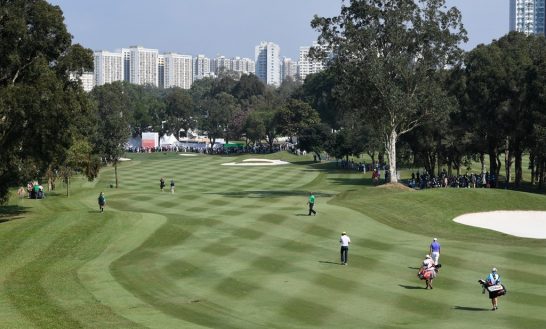Any Development on Hong Kong Golf Club Would be an Act of Environmental Vandalism

This is the view of Alexander M. Duggie, Managing Director, Urbis Limited who is a registered landscape architect practising in Hong Kong since 1985. Duggie co-author a 2005 government study (Landscape Value Mapping of Hong Kong) that mapped landscape character and quality in Hong Kong.
Writing in the South China Morning Post, Duggie said: “I feel qualified to speak of the potential landscape impacts of the deeply flawed partial development option of the Fanling golf course, proposed by the Task Force on Land Supply.”
In a report issued recently, the Task Force on Land Supply recommended to take 32 of the Hong Kong Golf Club’s 172-hectare Fanling site for development.
Duggie said: “Being over 20 hectares, this option would require a full environmental impact assessment under the related ordinance. This will include prediction of impacts on ‘landscape resources’ – the individual components of the landscape such as trees, vegetation, streams, topography, etc – and on landscape character, meaning the combined effect of all these individual components viewed holistically.
“Having undertaken a preliminary assessment, I conclude that the landscape impact would be devastating and unacceptable, in accordance with Environmental Impact Assessment Ordinance methodology.”
According to Duggie, the eight holes of the Old Course recommended for development wind up and down through mature secondary woodland, containing upwards of 4,700 trees, of which 567 are mature with diameter over 300 mm, of which 119 are potential old and valuable trees, including a large stand of globally threatened swamp cypress. Such lowland wooded habitats are rare in Hong Kong, as most have been lost to development.
Duggie added: “The Fanling golf club landscape character is unique in Hong Kong. It is a high-value landscape that has been meticulously managed for over 100 years and may be considered the oldest and most beautiful large-scale man-made landscape in Hong Kong.
“The undulating terrain and narrow site east of Fan Kam Road dictates that it will not be possible to create development platforms large enough for public housing without devastating the existing land form and trees, most of which would thus be felled.
“Having worked over the years to preserve trees on many development sites throughout Hong Kong, I can say with great certainty that recent brash promises by politicians and task force members to retain most trees won’t be practically achievable.
“The Fanling golf course landscape is a heritage resource that must be preserved for future generations. This landscape has been 107 years in the making, and it would be an act of extreme vandalism to destroy any part of it.”
Search
Other Course Highlights
- New state-of-the-art accommodation to improve overall experience for golfers at PGA NovaWorld Phan Thiet
- New Integrated Software installed at the PGA NovaWorld Phan Thiet in Vietnam
- Vietnam’s newest premier golf destination joins Asian Golf Industry Federation and International Association of Golf Tour Operators
- Sentosa’s Serapong Reaches New Heights in Golf Digest World’s 100 Greatest Golf Courses
- Greg Norman-Designed PGA NovaWorld Phan Thiet is Nominated for World’s Best New Golf Course’ at World Golf Awards
- PGA NovaWorld Phan Thiet Welcomes International Visitors as Vietnam Reopens Border
- KLGCC’s Sustainability Efforts Achieve International Recognition at Energy Management Leadership Awards 2021
- Troon Golf and Emaar Hospitality Group Mark 20TH Anniversary of Partnership with Celebratory Event
- KGA Welcomes New Golf Course Superintendent
- Yas Links Abu Dhabi Partners with Marriott Business Council to Raise Funds for Operation Smile UAE
- More news...